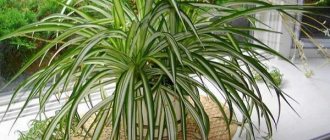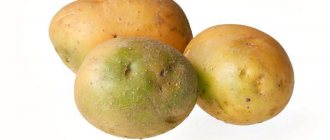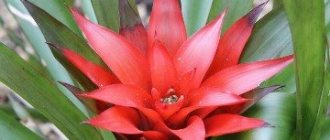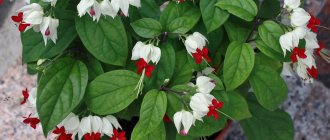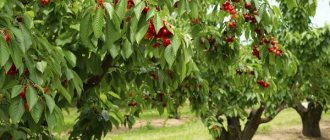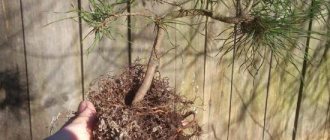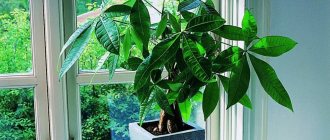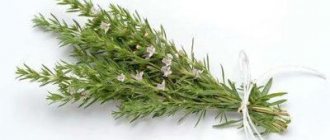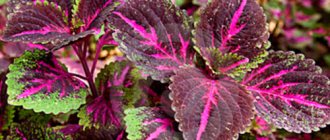Hoya is a very beautiful evergreen plant. Its main distinguishing feature that sets it apart from other plants is its long shoots. They can reach several meters in length, and hoya leaves are a noble dark green color and unusually hard to the touch.
Ivy blooms infrequently, hoya flowers at first glance may seem unreal, as if made of wax, their aroma is very strong. This plant is quite popular; it is used mainly for vertical interior decoration.
But signs and superstitions did not spare the hoya either. Many people are sure that it is impossible to keep it in the house, otherwise it will constantly attract misfortune. But is it?
Is it possible to keep Hoya wax ivy at home?
This question cannot be answered unambiguously. Some will say it is possible, some will say it is not. The people have a firmly established superstition that having ivy in the house is bad luck. It is because of this that people do not want to decorate their home with hoya. In addition, she is credited with some mythical properties:
- When hoya blooms, it means a period of big problems for the owner.
- Ivy drives men away, destroys marriages and makes women unhappy.
- In a house where ivy grows, financial problems arise.
But wax ivy also has defenders who refute negative rumors and attribute positive properties to this plant.
For example, the ability of hoya to pacify enemies, envious people and gossips.
So is it possible to keep Hoya (wax ivy) at home? Everyone decides for themselves, but you should remember: indoor plants create comfort and neutralize harmful substances in the air.
Plant species
The indoor Hoya flower has several varieties:
- Hoya bella, which translates to "beautiful" or "beautiful". It is an evergreen low-growing flower no more than 50 cm tall. The branches of the flower are quite spreading, with small fleshy leaves that do not even reach 3 cm in width. The flowers of this variety of hoya are star-shaped. The center of the flower is dark pink, and its edges are pure white, which creates a rather unusual and beautiful picture.
- Hoya carnosa, or in other words, fleshy hoya. This variety of vine is the most popular among gardeners. Its leaves are long, reaching 8 cm, and the inflorescences consist of 20 light pink flowers. But there are varieties in which the center is dark red and the edges are cream. Caring for this type of vine is quite simple, and even a beginner can handle it.
- Hoya imperialis Lindl, or majestic. This plant is a pubescent plant, it can curl around the room, and its leaves reach more than 20 cm. The leaves are smooth and flat at the base. The flowers of this hoya are crimson in color. The flowers themselves are quite large and have a slightly greenish tint on the outside. The inflorescences are collected in umbrellas of six pieces.
- Noua multiflora, or multi-flowered. This type of hoya can be found in greenhouses and most flower stands.
Where to put ivy hoya according to feng shui
Hoya has a very soft energy that has a positive effect on the atmosphere in the house. Wax ivy is able to destroy negative energy and bad emotions. According to Feng Shui, hoya helps stabilize the energy in the house, helps household members forget about problems and gives spiritual harmony.
In addition, Hoya can help improve relationships between colleagues and even help advance your career.
Hoya is called the flower of family happiness, because it helps to improve relationships between spouses, rekindles former passion, and restores the intensity of feelings. To improve your family life, it is recommended to place a pot of wax ivy in the bedroom. This will help harmonize relationships and improve family life.
Hoya can be placed in a children's room, then it will help the child become more independent, quickly make the necessary decisions, and become more self-confident.
If you place the hoya in the living room, then its effect will be aimed at helping household members relax faster after a hard day and calm down faster.
It is important to remember: if you are prone to laziness, then hoya is not suitable for you, as it will only aggravate the situation. But for pessimistic people, wax ivy will come in handy - it will help you tune into a positive mood.
Hoya is exactly the plant that will bring comfort and tranquility to your home.
Most common mistakes
When keeping indoor hoya plants, many gardeners often make mistakes that lead to the death of the flower. But if the plant does not bloom for a long time, then most likely the fact is that it did not have enough light or nutrients in the substrate. And after trimming the main peduncle, the plant may not bloom for a long time.
If you have curled and pale leaves, you should definitely pay attention to the temperature and lighting. A similar phenomenon with a houseplant most often occurs against the background of insufficient lighting and low temperature.
If the air in the house is too dry, the leaves of the plant will fall off and dry out. Caring for a flower involves proper watering, which means that you should not water it with cold water under any circumstances.
Do Hoya wax ivy bring bad luck?
Many people are opposed to this plant in the home because there are many negative superstitions associated with it. One of them says that hoya drives men out of the house and brings loneliness to women. It is believed that the husband and sons will “run away” from the house when such a plant appears in it.
This can only be avoided by throwing it away (and with it all the misfortunes). But all these superstitions have nothing to do with wax ivy, since they relate exclusively to ordinary ivy. Hoya can only drive enemies and liars out of life.
In addition, wax ivy combines quite well with other plants. Unlike ordinary ivy, hoya does not drain the life force from them.
Wax ivy blooms incredibly beautifully. Depending on the type of plant, the flowers are different and smell very pleasant. And because of the aroma, another superstition is imposed on hoya - hoya can poison a person with its smell. But this is not true either. The plant does not contain toxins or harmful substances, but can cause allergies during active flowering.
Flower care
Temperature : in summer, it is recommended not to exceed 25 degrees; in winter, the minimum temperature should be 10–15 degrees, depending on the type of flower.
Lighting : ivy loves light and can easily tolerate exposure to direct sunlight, but it can cause leaf burns. It is recommended to place the flower pot on a southeast or southwest window.
Replanting and care : it is best to replant a flower in the spring once every two to three years, and hoya blooms best in cramped pots. Under no circumstances should faded flower stalks be removed; new flowers will develop in their place over time. The plant does not like drafts. For better flower growth, support is needed, and can also be grown in hanging pots. It is worth pruning the plant very carefully; you can remove damaged leaves and shoots that did not have flowers.
Soil : the soil should be light and loose, with good water and air permeability. It can be made from peat, sphagnum moss, perlite and garden soil. The pot must have a hole.
Watering : the soil should be moderately moist and dry two to three centimeters before the next watering. Water with settled water no more than once a week in the summer. In winter, limit watering to once every two weeks.
Many gardeners like liana-like plants. They can give any room unique comfort and beauty. In addition, all vines come from the tropics, and therefore they have bright and very large flowers. There are many representatives of the genus of vines, but the most common is the wax flower, or hoya beautiful.
Harm and benefits of flowers for humans
Research has shown that hoya is a beautiful, harmless decorative flower that is perfect for decorating residential and non-residential premises. But even the most beautiful flower has positive and negative properties.
Harmful properties:
- Aroma. A strong smell can cause allergies, especially if the flower is in a small room. Therefore, you should not place Hoya in homes where there are people with allergies or children with diseases of the lungs or respiratory system.
- Juice. The sap of the plant can cause irritation to the skin, so you need to take all precautions when working with the flower.
Beneficial features:
- Hoya purifies the air and produces the necessary oxygen.
- The foliage of the plant is used in the treatment of furunculosis and carbunculosis.
- Improves well-being, provides a surge of vitality, helps to reveal creative abilities.
- Perfectly decorates the interior.
Diseases and pests
This flower is resistant to various kinds of pests and diseases, but if it is not properly cared for, then various pests begin to actively multiply on the leaves. Most often, indoor ivy is affected by:
To quickly get rid of insects, you need to use special strong insecticides. But for a plant with thick leaves, simply wiping the leaves with alcohol is enough. To prevent infection of the plant, the soil and pot should be thoroughly disinfected.
Most often, plant diseases are caused by a lack of light or nutrients. But it often happens that a plant gets sick due to excessive watering. At the same time, it should be remembered that if the plant is not watered enough, it will develop irregular leaves, and if watered too much, then mold will form on it and the leaves will be affected by fungus.
Very often, indoor ivy is affected by viruses, fungi and bacteria. If white, black or brown spots appear on the leaves, then most likely it is affected by a fungus. But due to the large number of microorganisms, rot, wilting and spotting also appear. You can cure a flower using a copper-soap solution, which is quite simple to do at home. To do this, just mix a solution of copper sulfate and laundry soap, let the solution brew, and you can treat the plant.
If root rot develops in indoor hoya, it will have to be destroyed. You can, of course, try to save the plant at home using Bordeaux mixture or colloidal sulfur, but this most often turns out to be ineffective.
In flowering indoor vines, the leaves are often affected by powdery mildew. And if treatment is not started on time, then the buds and stems are also covered with dew. To heal a flower, you need to humidify the air, maintain optimal temperature and increase ventilation.
Signs and superstitions about wax ivy
Hoya is simply shrouded in negative beliefs. The plant is credited with attracting negative energy and also driving away men. In addition, Hoya is called an energy vampire. But there are also good superstitions, although there are very few of them.
People don't want to keep a climbing flower in their house because it can drain the energy of living beings. It is because of this that climbing plants used to be planted near the entrance - they took away the negative energy of guests entering the house. But hoya does not drain life force, as evidenced by the fact that other plants get along well next to it.
Hoya wax ivy is also believed to bring bad luck. Many people claim that with the appearance of wax ivy in the house, its inhabitants began to have problems in almost all areas of life. And after getting rid of it, everything immediately returned to normal. But the plant should not be blamed for this; first you need to pay attention to yourself and your behavior.
Hoya is not recommended for unmarried girls, as it is believed that the plant will scare suitors away from them. There will be no men in an apartment where there is hoya - this is exactly what some superstitious people think. But this is a fundamentally incorrect statement - family relationships are the work of people themselves, and flowers have nothing to do with it. On the contrary, wax ivy will help strengthen the marriage union.
Why are there such contradictory signs about this plant? Because many people grow hoya, and some have good relationships, while others have bad relationships. And it’s very easy to blame the unfortunate plant for all the troubles.
Wax flower care
The substrate for wax ivy is quite specific, and therefore the flower must be replanted immediately after purchase. This should also be done because sellers most often stuff plants with fertilizers that accelerate growth.
There is no need to replant the plant every year; it is enough to do it only once every two years. There is no need to change the composition of the soil, although a larger pot should be taken.
Selection of lighting
During the replanting process, special attention should be paid to the shoots of the plant; shoots that are too long must be cut off. Flowering occurs only on short shoots. This amazing climbing plant needs a lot of light. Therefore, it is recommended to place the flower in the open sun. But in the midday heat, you should diffuse the sunlight a little - cover the leaves with gauze to prevent burns.
The optimal place for growing hoya will be an east or west window in the house. But a newly purchased flower should not be immediately placed in the open sun. The flower should be accustomed to sunlight gradually. If you grow a vine on a north window, it will wither from lack of light or will not bloom at all.
In winter and autumn, the flower also requires a lot of light, but there is no need to shade it. With the arrival of spring, the plant should also be gradually accustomed to the sun so as not to burn its leaves.
Optimal watering and temperature
The leaves of the vine are quite dense, so the plant may not need watering for a long time. It is enough to spray the leaves periodically. However, the condition of the earthen ball should be carefully monitored so that it is not too dry. In summer and spring, water the soil as it dries out.
Signs according to the state of the flower
Hoya is an unpretentious plant, which is credited with a wide variety of properties. Depending on what happens to him, you need to prepare for different life situations. There are a number of signs as to whether it is possible to keep indoor ivy at home.
If the hoya blooms at the wrong time, this portends a misfortune in the family, which can lead to the death of a person.
If the wax ivy begins to dry out, then you should pay attention to your surroundings; perhaps an enemy has appeared among your loved ones. The flower absorbed his negative energy, thereby protecting the inhabitants of the house.
If the leaves begin to turn yellow, then you should pay attention to the health of your household. Yellowing leaves indicate that there is unhealthy energy in the house, and it is worth taking appropriate measures to improve it.
Reproduction methods
At home, wax ivy can be grown:
The first reproduction option is the most optimal and effective. For successful rooting, it is necessary that the cuttings have several buds and leaves. To do this at home, you should cut off the shoots in the fall and place them in sand or soil. In order for the hoya plant to take root successfully, you should maintain a regular room temperature of no higher than 12 degrees. And to accelerate growth and rooting, you should use a special product that can be purchased at any flower shop.
In order to achieve successful propagation of hoya, you should create ideal conditions for it and your home. If the ideal temperature and humidity are maintained, the plant can produce seeds. But this method is unreliable, because it is extremely difficult to check the germination of seeds.
